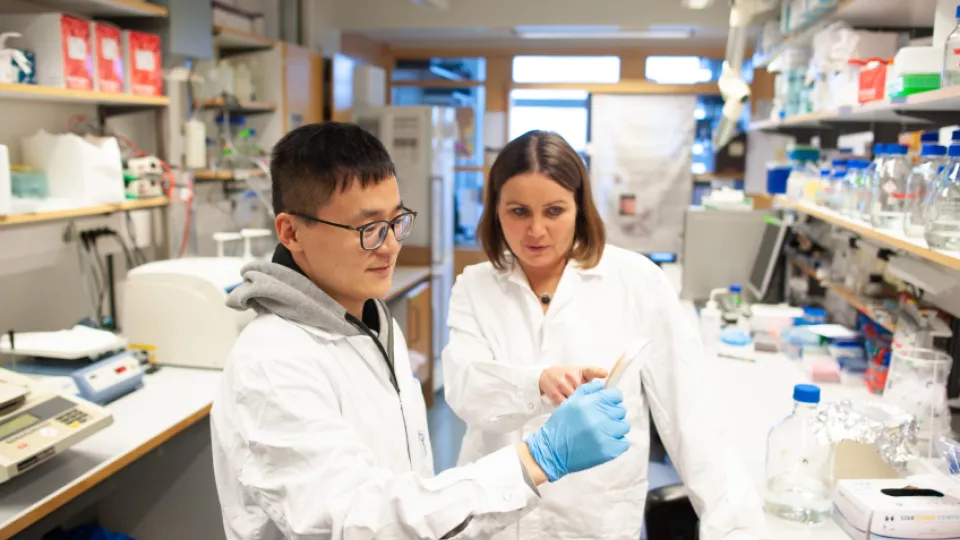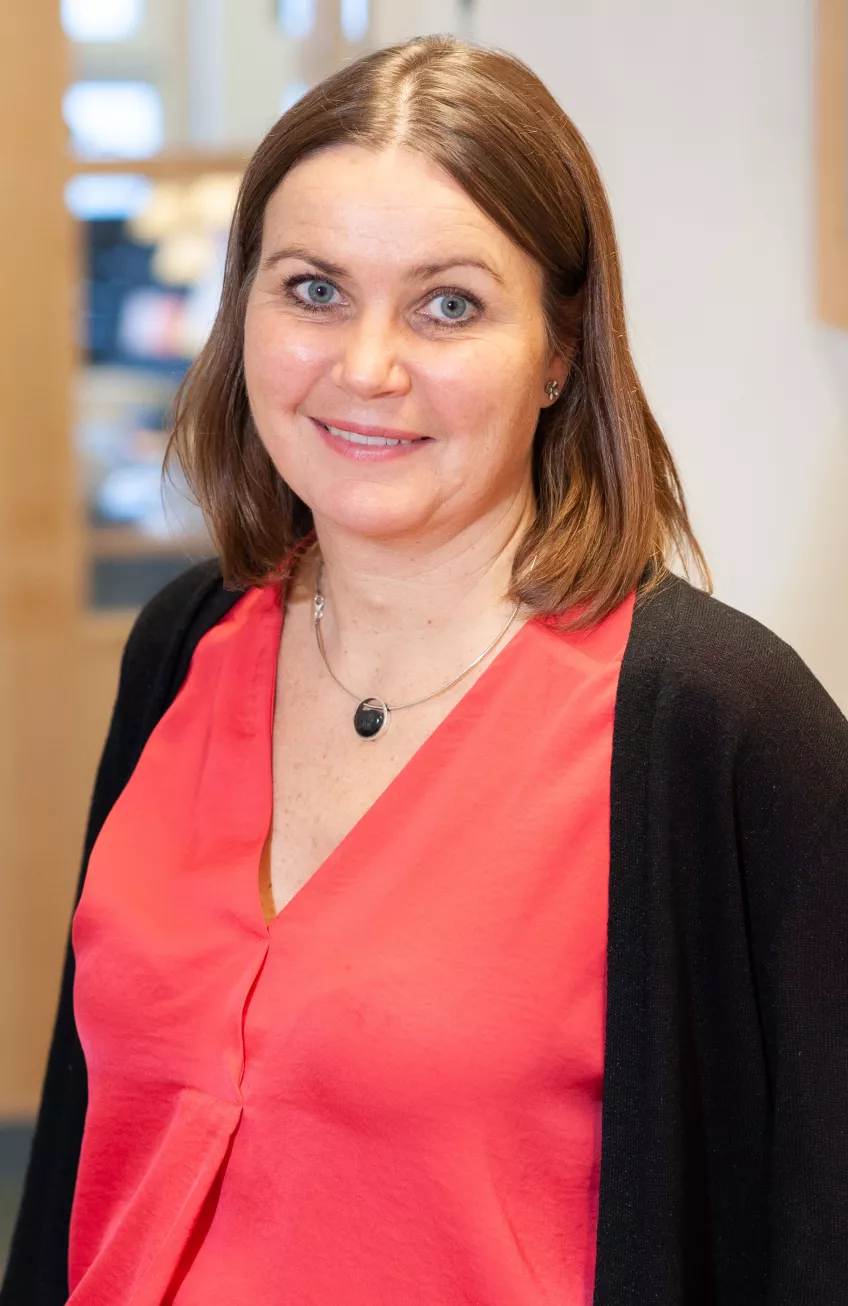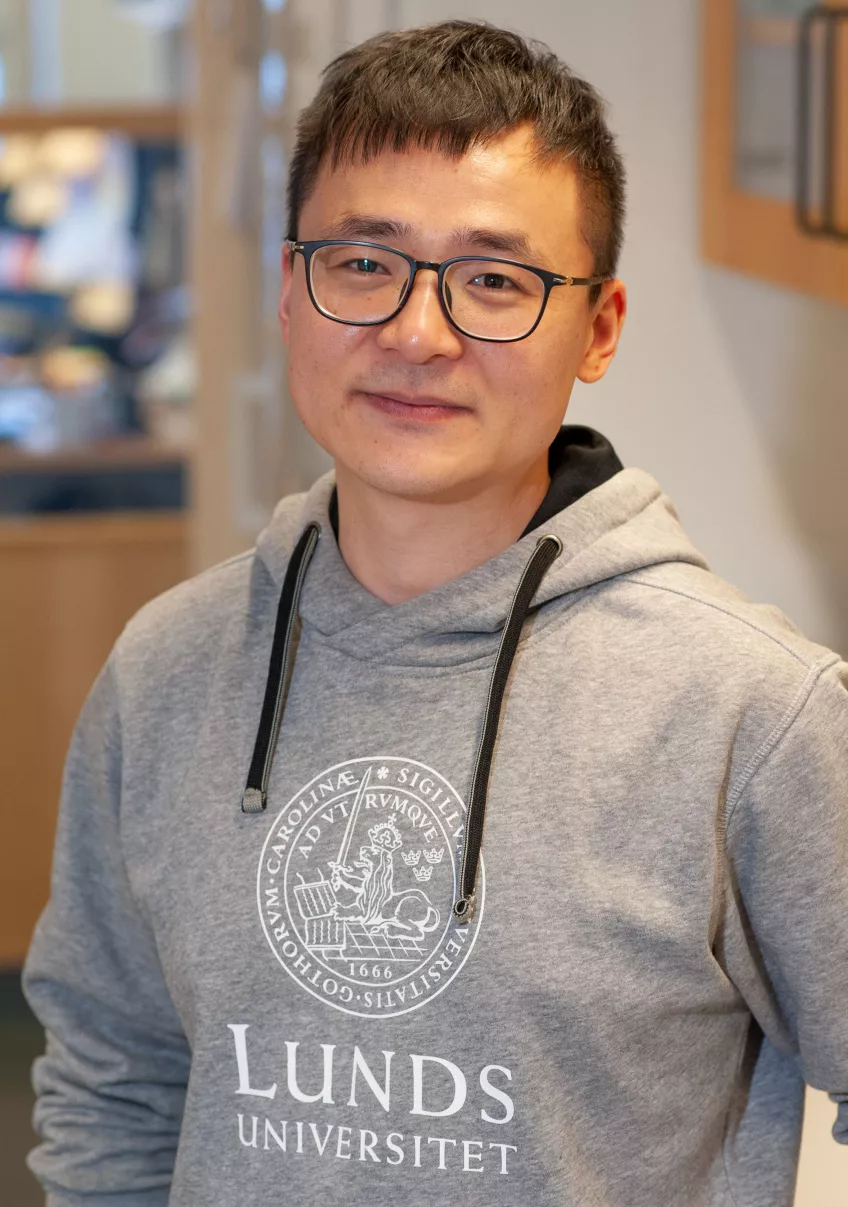Karin Lindkvist, professor of cell biology at Lund University, studies protein structures, including those in cell membranes. These proteins include aquaporins, channel proteins that are responsible for water and glycerol regulation in human cells. Lindkvist and her colleagues recently published an article in the journal Nature Communications describing a study in which they used cryogenic electron microscopy (cryo-EM) to investigate the structure of aquaporins.
“There is a great deal going on in the cell and proteins in the cell membrane help to control what gets in and out of the cell. Membrane proteins are therefore an interesting target of attack when developing new therapies. It is often said that around half of all drugs attack membrane proteins,” says Lindkvist.
Mysterious fifth channel
Aquaporins form four-fold complexes, a structure with four channels with a fifth central opening in the middle.
“The fifth channel is a bit of a mystery. It’s not entirely clear what function it has but our study has shown that there is something there. Our hypothesis is that it transports the metabolite glycerol-3-phosphate, which is known to be important to the function of beta cells, but further analysis is required.”
The researchers also observed the four-fold complexes of aquaporins sit in pairs, something that was not previously known.
“This suggests that they help to hold cells together, or to create interactions between them. Much like a magnet. When we conducted our study of beta cells from patients with type 2 diabetes, we discovered that these proteins are vital to not develop the disease,” says Lindkvist. “The fact that aquaporins are vital to not develop diabetes suggests that they perform a very important function in beta cells. Our structural studies show that aquaporins may well contribute to health in many more ways than ‘simply’ providing a channel for glycerol and water; for example, transporting metabolites and holding the cells together in the correct structure in the pancreas.”
It is also known that aquaporins play an important role in cancer, including in cancer cell growth and metastasis. They have also been observed to be important when cancer cells form new blood vessels. Lindkvist and her research group are now turning their attention to determining the structure of aquaporins in complex with blocking drug candidates.
“Aquaporin 7 is interesting as a target molecule for treating cancer and we want to study its structure to see how it forms complexes with drug candidates, as well as how cancer cells react to these drugs.”


